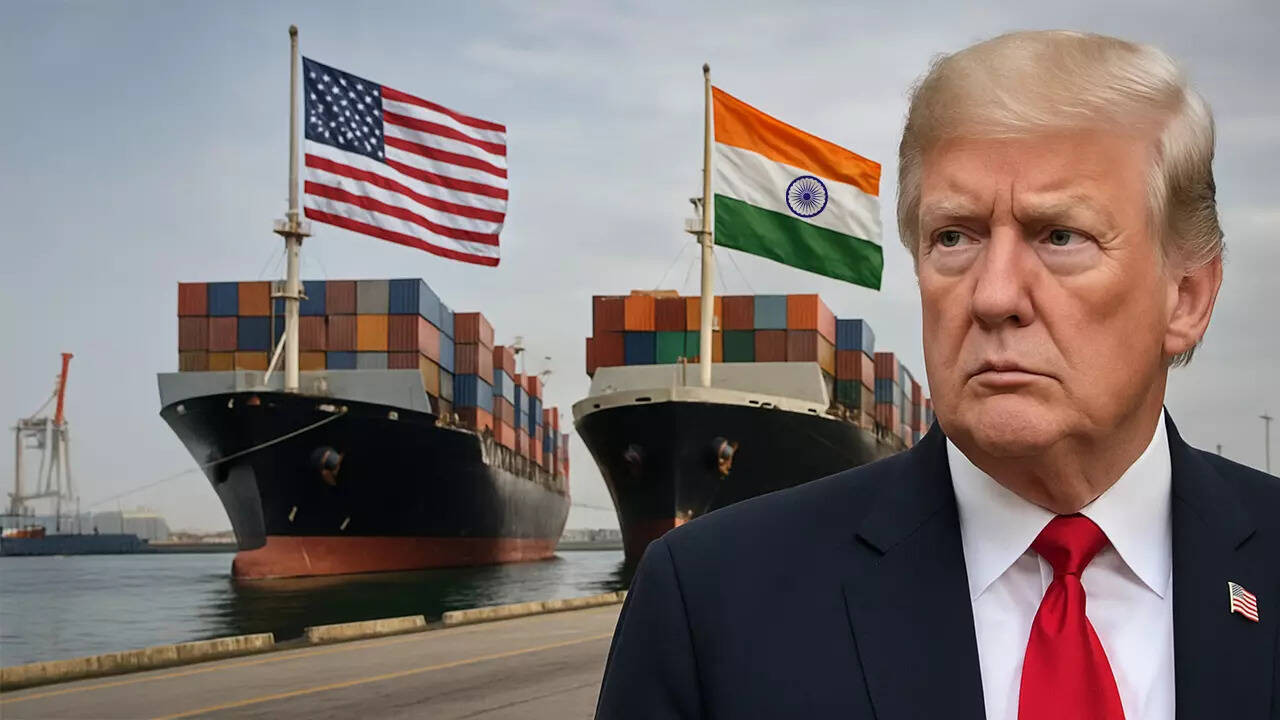India has strongly condemned the US’s decision to impose an additional 25% tariff on Indian crude oil imports from Russia. The Ministry of External Affairs labeled the move ‘unfortunate,’ emphasizing India’s commitment to safeguarding its energy security and national interests. This decision places India at a competitive disadvantage in the US market, potentially impacting trade relations between the two nations.
Navigating the New Global Oil Order: India’s Response to US Tariffs
Donald Trump’s recent announcement of a hefty 25% tariff on Russian oil imports has sent ripples through the global energy market, and India is taking notice. This move, framed by the former US president as a way to pressure Russia, is prompting a complex dance of diplomacy and economic strategy, particularly for nations like India who are carefully balancing their energy needs with international relations. What does this mean for India’s energy future, and how is the nation poised to respond?
India’s Stance: A Measured but Firm Response
The initial reaction from New Delhi has been one of disappointment, conveyed through official channels with the term “extremely unfortunate.” While diplomatic language often veils underlying concerns, the message is clear: India views the tariff as a disruptive element in an already volatile global landscape. India, like many nations, has been navigating the challenges of securing affordable energy in a world grappling with geopolitical instability and fluctuating prices.
India’s reliance on Russian oil, while not exclusive, has grown in recent years, particularly as it sought to diversify its energy sources and secure competitive pricing. The tariff throws a wrench into these carefully laid plans. The government has stated that it will “take all actions necessary” to protect its interests. But what might those actions be?
Possible Courses of Action for India
Several possibilities are on the table. India could engage in direct negotiations with the US government, seeking exemptions or adjustments to the tariff structure. Given the complex relationship between the two countries, a diplomatic solution isn’t out of the question.
<img src="image_url_for_oil_refinery_in_india.jpg" alt="An oil refinery in India, highlighting the importance of oil imports for the nation’s economy.”/>
Alternatively, India might explore alternative sourcing options, further diversifying its energy suppliers. This could involve strengthening ties with other oil-producing nations or investing in domestic renewable energy sources to reduce its overall reliance on imported oil. Exploring alternative procurement strategies for oil imports will be crucial in the long term.
Another option, though less desirable, is to absorb the cost of the tariff, potentially passing it on to consumers. However, this could have inflationary consequences and impact the nation’s economic growth.
This situation also highlights the importance of India’s continued investment in renewable energy sources. Diversifying the energy portfolio is not just an environmental imperative, but a strategic one, insulating the nation from the shocks of global oil market volatility. Check out our previous post on [India’s Green Energy Initiatives](internal_link_to_related_content).
The Broader Implications for the Global Energy Market
Trump’s tariff isn’t just an India-specific issue; it has wider ramifications for the global energy market. It could lead to a reshaping of trade flows, with Russia potentially seeking alternative markets for its oil. This could, in turn, impact prices and availability for other nations. The long-term effects of this tariff on the global oil market remain to be seen, but volatility is practically guaranteed.
Furthermore, the tariff raises questions about the future of international trade relations. It underscores the potential for unilateral actions to disrupt established norms and create uncertainty in the global economy. This could incentivize other nations to pursue protectionist policies, further fragmenting the global trading system.
Adapting to a Changing Landscape
For India, the key will be adaptability. The nation needs to be agile in its response, exploring all available options to secure its energy needs while navigating the complex geopolitical landscape. This will require a combination of diplomatic engagement, strategic planning, and a commitment to diversifying its energy sources. The challenge is significant, but India’s growing economic strength and diplomatic prowess position it to weather this storm and emerge stronger in the long run.
The evolving scenario underscores the significance of a multi-pronged approach to energy security, blending strategic partnerships, technological innovation, and a firm commitment to sustainable energy practices. Only then can India truly secure its energy future in a world characterized by constant change.







